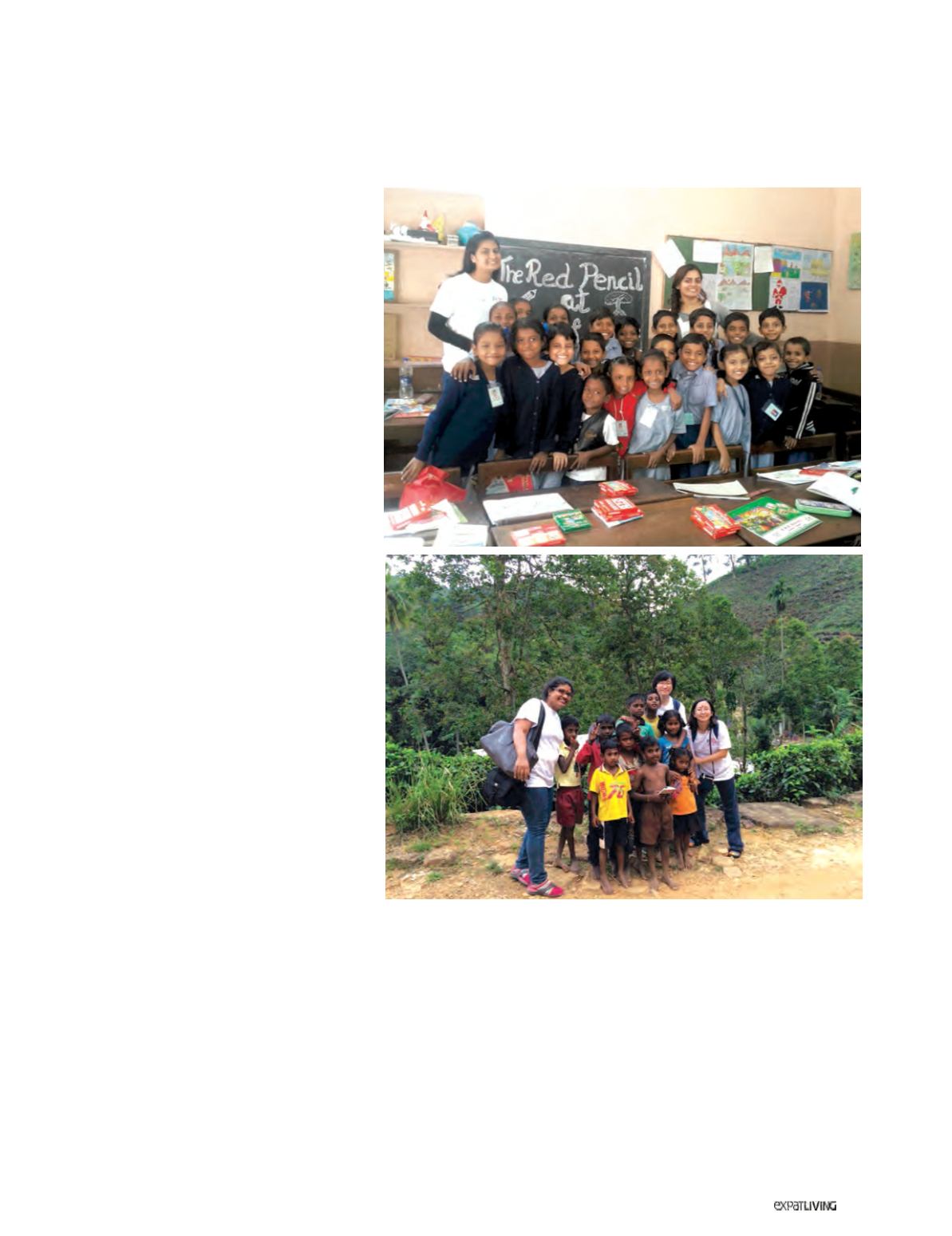

ART THERAPY
151
June15
going through and how they feel about
it,” Laurence says.
How long does it normally take for
children to respond to this type of
therapy? According to Laurence, no
time at all.
“All too often, children don’t have the
vocabulary to express how they feel
and what they’re going through. On the
contrary, drawing is such a natural way
of expression for children,” she says.
“Sometimes, when parents struggle
with their little ones’ issues, they bravely
go from one professional to the other,
unable to find a way to understand
what’s going on – much less find a
solution. But, as art therapy puts the
creative act of drawing at the centre
of the therapeutic process, very often
the issue manifests itself quite rapidly,
which then gives the art therapist a
chance to address it verbally with the
child through the drawing. This indirect
way of discussing the problem is much
more comfortable for the child, as he or
she can talk about what’s going on in the
drawing, and not in his or her own life,
which may feel a bit threatening.”
She adds, “Often, for an art therapist,
it’s more of a challenge to work with
adults, who are more guarded. Bringing
the adult back into the spontaneity
of drawing like a child, without any
aesthetical purpose and without any
judgement, is often part of the early art
therapeutic work.”
The Red Pencil
Though Laurence soon became
passionate about starting her own
humanitarian project, it took about eight
years for her dream to finally come to
fruition.
“After the tsunami in 2004, having
worked at Raffles Hospital with French-
speaking patients who had been caught
in the waves, I wished to find a way to
reach out to many more than just those
I could see myself. It was then that the
seed idea of a foundation was sown,”
she says. “However, I was still fulfilling
some professional duties that didn’t
allow me time to pursue the dream. It
wasn’t until 2010, when I established a
private practice in my studio and could more easily organise my own schedule
that I decided to dedicate some of my time to this project. I had no idea, at the
time, where it would bring me.”
In 2011, Laurence officially founded The Red Pencil, with the key mission of
bringing the benefits of art therapy to children, adults and families in overwhelming
situations for which they have no words to convey their pain – particularly those
afflicted by long-term hospitalisation, disability and trauma.
“We use art as a means to bring individuals joy, creativity, relaxation, fun and hope,
and as a way for communities to bond and find new resources,” Laurence says.
“This is all the more powerful when individuals or groups have been challenged
by difficult life circumstances, like natural disasters or conflicts.”
Today, The Red Pencil Singapore has not only a full-time art therapy service at KK
Hospital, but also over 150 registered art therapists doing clinical work with children,
families and the elderly – particularly those from disadvantaged backgrounds. In
Mission in India
Mission in Sri Lanka



















